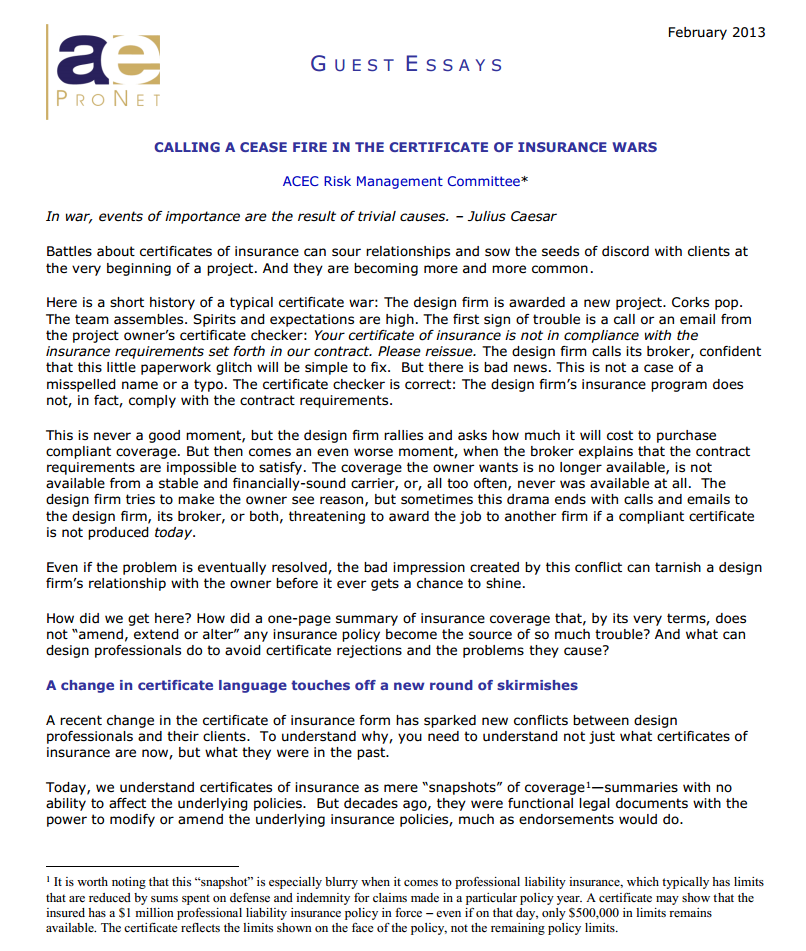 The following is an excerpt of the February 2013 a/e ProNet Guest Essay, Calling a Cease Fire in the Certificate of Insurance Wars. You may download the full PDF version of the newsletter on our website.
The following is an excerpt of the February 2013 a/e ProNet Guest Essay, Calling a Cease Fire in the Certificate of Insurance Wars. You may download the full PDF version of the newsletter on our website.
In war, events of importance are the result of trivial causes. – Julius Caesar
Battles about certificates of insurance can sour relationships and sow the seeds of discord with clients at the very beginning of a project. And they are becoming more and more common.
Here is a short history of a typical certificate war: The design firm is awarded a new project. Corks pop. The team assembles. Spirits and expectations are high. The first sign of trouble is a call or an email from the project owner’s certificate checker: Your certificate of insurance is not in compliance with the insurance requirements set forth in our contract. Please reissue. The design firm calls its broker, confident that this little paperwork glitch will be simple to fix. But there is bad news. This is not a case of a misspelled name or a typo. The certificate checker is correct: The design firm’s insurance program does not, in fact, comply with the contract requirements.
This is never a good moment, but the design firm rallies and asks how much it will cost to purchase compliant coverage. But then comes an even worse moment, when the broker explains that the contract requirements are impossible to satisfy. The coverage the owner wants is no longer available, is not available from a stable and financially-sound carrier, or, all too often, never was available at all. The design firm tries to make the owner see reason, but sometimes this drama ends with calls and emails to the design firm, its broker, or both, threatening to award the job to another firm if a compliant certificate is not produced today.
Even if the problem is eventually resolved, the bad impression created by this conflict can tarnish a design firm’s relationship with the owner before it ever gets a chance to shine.
How did we get here? How did a one-page summary of insurance coverage that, by its very terms, does not “amend, extend or alter” any insurance policy become the source of so much trouble? And what can design professionals do to avoid certificate rejections and the problems they cause? Continue reading “Calling a Ceasefire in the Certificate of Insurance Wars”



